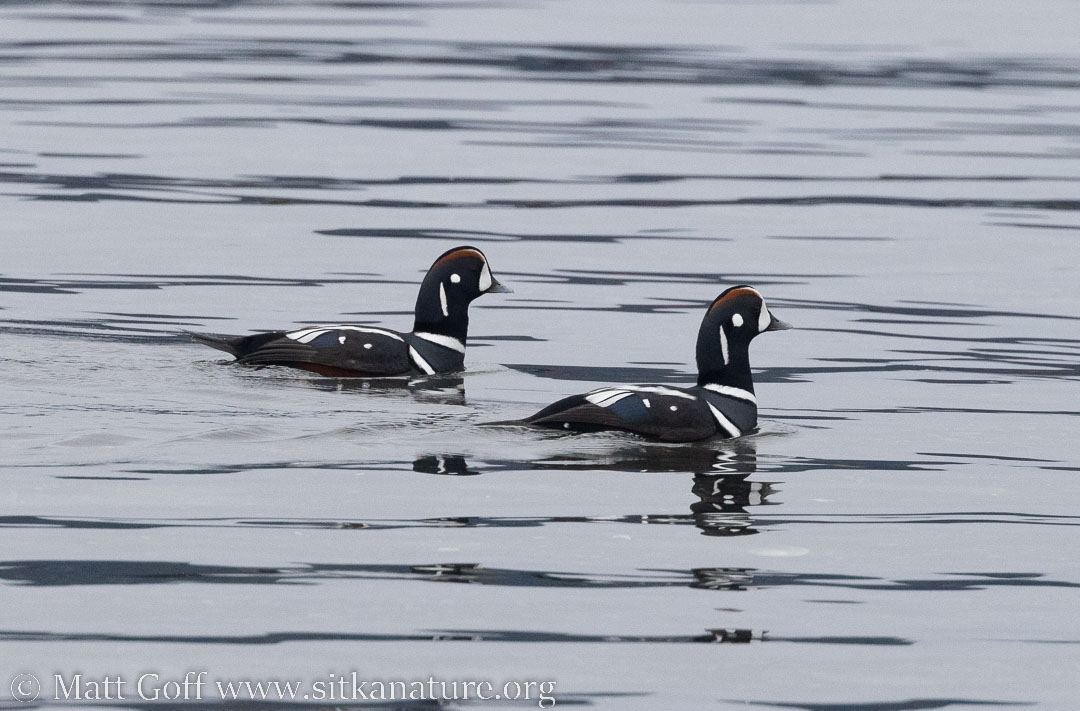Overcast with occasional rain. Temperatures in the low 40s and light winds.
I went out to Starrigavan this afternoon. Connor had seen Herring Gulls there yesterday, so I thought I would see if they might be around.
Gull numbers were down from what I had seen on previous days. (It seemed like bird and whale activity off Harbor Point was also not what it had been. Perhaps the herring had moved elsewhere.)
I ended up poking around on the beach a bit by Old Sitka State Historical Park.
Among the 25+ Black Turnstones there were two Surfbirds and a Rock Sandpiper.
I didn’t find any Herring Gulls among the 50-100 I saw on the beach.
My biggest curiosities of the day came from looking at barnacles.
Several of them had black ball-like growths on them. At first I thought it might be Collemopsidium, a lichen that grows on shells in the intertidal. However, when I’ve seen it before, I don’t think the black bits were so large (though maybe some were).
When reviewing my pictures at home, I noticed they appeared to be a very dark green (one showed green where thin enough for light to pass through). I probably need to go back and collect some to section and look at under a microscope.
The second barnacle curiosity was orange patches on the surface of many shells. It’s possible it’s some sort of iron-oxide staining, but if so, I wonder why it’s so patchy. Another possibility I’m considering is that it’s a lichen (or perhaps a thin film/crust of algae or bacteria).
On this day in 2017, I did a review of the first month of the big year project. I felt like I was going pretty hard that year, and had made it up to 99 species (in the end, it ended up being 111 species and 130 unique taxa for the month as more got identified to species.
In contrast, I’ve felt like I’m taking a comfortably steady approach and am up to 125 species with 147 unique taxa.
It’s a similar story with the Sitka observations as a whole. We have 474 observations with 256 unique taxa this year. In 2017 it was 569 observations, but only 228 unique taxa.
For me personally, I attribute this to knowing more of my neighbors (and knowing them better) now than I did then. Another contributing factor was my decision in early 2021 to start and maintain a streak of making early observations. I don’t think anyone else locally is keeping a streak of daily observations, but I do believe several of us have improved our knowledge of the organisms we share this area with, and that’s reflected in a greater diversity of species being observed.


